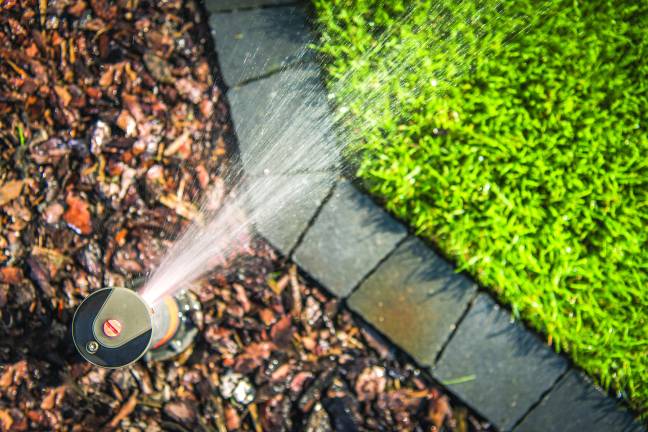Maintaining your sprinklers
Sprinklers. How to ensure your sprinkler or irrigation system last for years to come.

A professionally installed sprinkler system can ensure years of lush shrubbery, bright flowers and green grass.
When the ice and frost begin to melt, protect that investment by performing early maintenance to ensure everything’s in good working order before the system shifts into overdrive for summer.
SPRING PREPARATIONS
The first part of the preparation process involves patience. Confirm that frosty winter conditions have passed before activating your sprinklers. If you run water through the system while the ground remains frozen, the pipes may burst during startup or shortly thereafter. Assess your soil’s condition by digging at least a foot deep in an area away from the underground tubing. If you encounter frozen soil, postpone the de-winterizing process until temperatures are higher.
INITIAL EVALUATIONS
Begin at the control panel for the sprinklers, which is generally outdoors near your home’s water system. Closely follow instructions provided by the manufacturer or installer, while verifying that the settings for time, date, and zones remain correct. Inspect the condition of your backup batteries if the sprinkler system depends on them. If you have concerns regarding their remaining functionality, contact the installation company.
CLEAN UP
Cleaning the sprinkler heads before the first use may be the most labor-intensive part of this entire process, particularly if you have a large yard. Examine each one for any signs of wear and replace damaged parts before activating the system. You can do this with an old toothbrush, thoroughly cleaning all nozzles to ensure they distribute water uniformly across their assigned zones.
GETTING STARTED
After cleaning, make sure all valves are closed except for the nozzle that is farthest from the main water source, which should remain open to allow trapped air to escape. Gradually open the main valve until you hear water flowing and then allow the main line to fill steadily. For larger systems, you may want to only slightly open the valve over a period of minutes. Opening it too quickly could result in costly mishaps like ruptured pipes or valves.